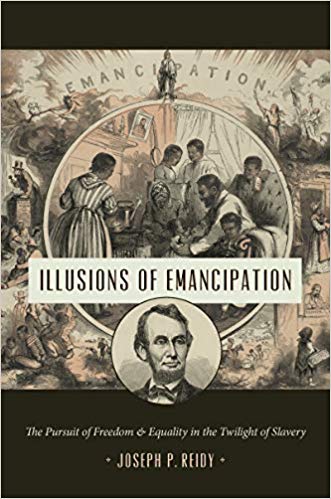Mercenaries. Cowards. Traitors. These are the names that fellow soldiers and future historians applied to the bounty men of the United States armies during and after the Civil War. However, historian Edwin P. Rutan II seeks to reverse that poor reputation with his recent book, High-Bounty Men in the Army of the Potomac: Reclaiming Their Honor. Rutan II acknowledges that the bonuses (or “bounties”) paid to late-war volunteers to entice them to enlist characterized them as unpatriotic and “money hungry” in the eyes of contemporary soldiers, politicians, and civilians. The author successfully argues that this negative perception resulted from a combination of preconceived notions and misconceptions; he posits that late-war recruits were capable, loyal, and quality soldiers that proved essential to winning the war in the east.
Rutan II begins by contextualizing his work within the sprawling literature on the Civil War. He states that even well-known historians like James M. McPherson, Bruce Catton, and William Marvel have reproduced pejorative wartime notions of what it meant to be “bounty-men” (13-15). These negative perceptions stem from primary accounts of early-war volunteers, as well as the Army of the Potomac’s general officers. The “seasoned veterans,” Rutan II posits, “held the traditional enmity toward replacements who had not yet undergone the hardships of war” and harbored jealousy of the higher bounties that their later-enlisting comrades had received (13). General officers and military officials saw the late-war recruits as a product of what they believed to be a flawed recruitment system. Rutan II shows that these accounts, drawn from wartime newspapers and postwar memoirs, have consistently helped to shape subsequent historians’ negative views of the late-war recruits as poor soldiers (29).
Rutan II assesses two key performances by late-war new regiments through the U.S. Department of Defense combat readiness model: Gen. John Hartranft’s division at Petersburg’s Fort Stedman, and Gen. Joshua Chamberlain’s 185th New York and 198th Pennsylvania at the battle of Five Forks. Through the readiness model, Rutan II analyzes the motivation; leadership; training and discipline; experience in the field; actual versus authorized strength; supply, and demographics of each unit before offering his own verdict on its performance in battle. This framework allows Rutan II to render a fair assessment of the late-war recruits and shed any contemporary prejudice.
A particular attribute of High-Bounty Men is Rutan II’s careful use of key terms. He identifies contemporary slang like “high-bounty men” or “high-number men” to be loaded terms, opting instead for neutral language like “late-war new regiments” and “late-war old regiments” to differentiate between the men who enlisted in 1861 and 1862 without bounties and those who enlisted in 1863 to 1865 with bounties. Rutan II clearly lays out this terminology in his introduction and consistently employs it throughout the following pages (3). However, he neglects to provide a sufficient definition of the term “bounty”—nor does he explain what the bounty system was or its relationship to the draft. Novice readers may misinterpret the term to mean reward money placed on those who desert, rather than a bonus to entice enlistment late in the war.
Another attribute of High-Bounty Men is Rutan II’s excellent use of sources. He weaves together letters, diaries, regimental histories, memoirs, the official records, and even popular histories to craft a complex and nuanced argument. His use of charts and data demonstrates that desertion was not endemic to late-war regiments. This data is compiled from disparate sources (like census records and the “Descriptive List of Deserters from Pennsylvania Military Units During the Civil War”) into what he calls the HIBO database, which he cites throughout the monograph (11).
High-Bounty Men breaks new ground and makes an historiographical intervention by reclaiming the honor of late-war recruits and refuting widely held claims regarding their honor and effectiveness as soldiers. Despite a few expository flaws, the book achieves what it sets out to do. It demonstrates convincingly that the late-war regiments did not greatly differ from earlier recruits in their combat readiness, and that they were, in fact, central to winning the war in the East.
Evan Portman, whose research interests include German American involvement in the Civil War, has written extensively for Emerging Civil War. He has also produced video content for the American Battlefield Trust.




